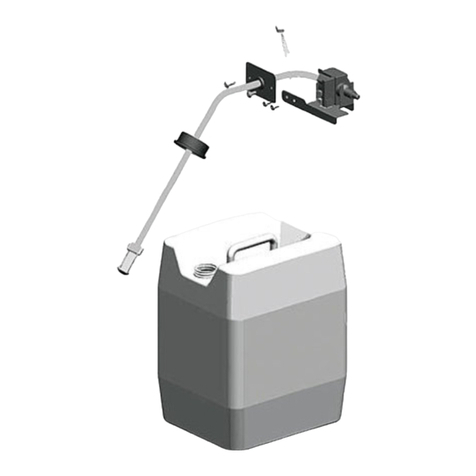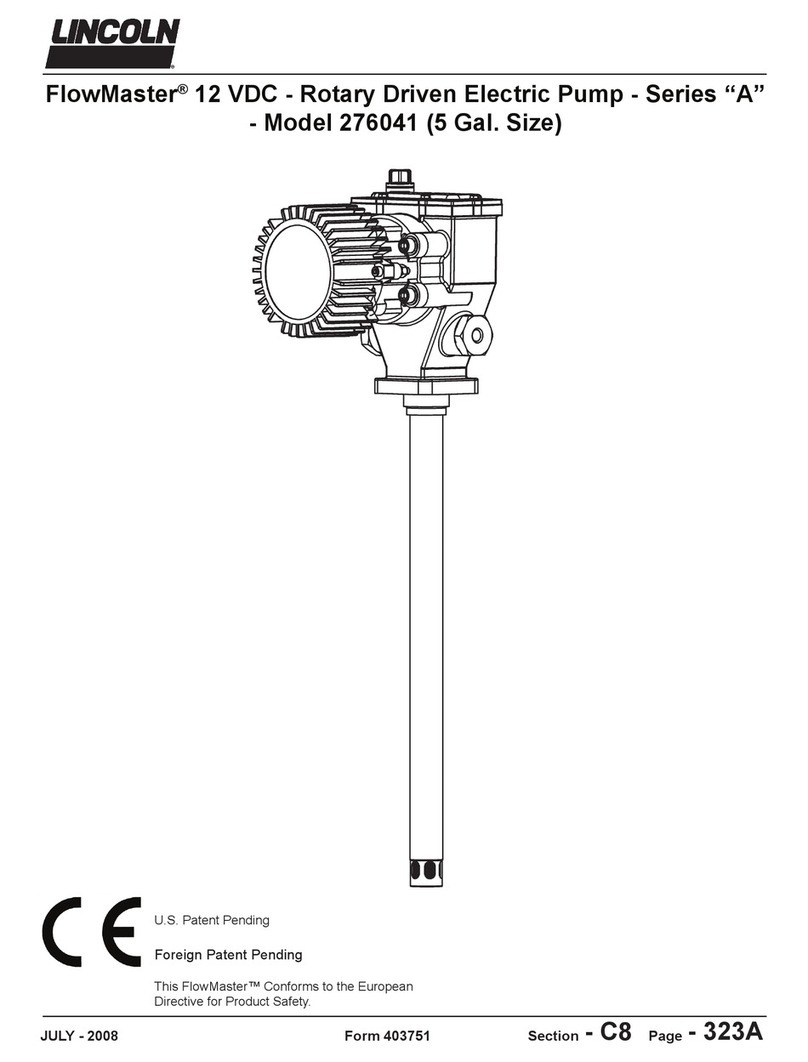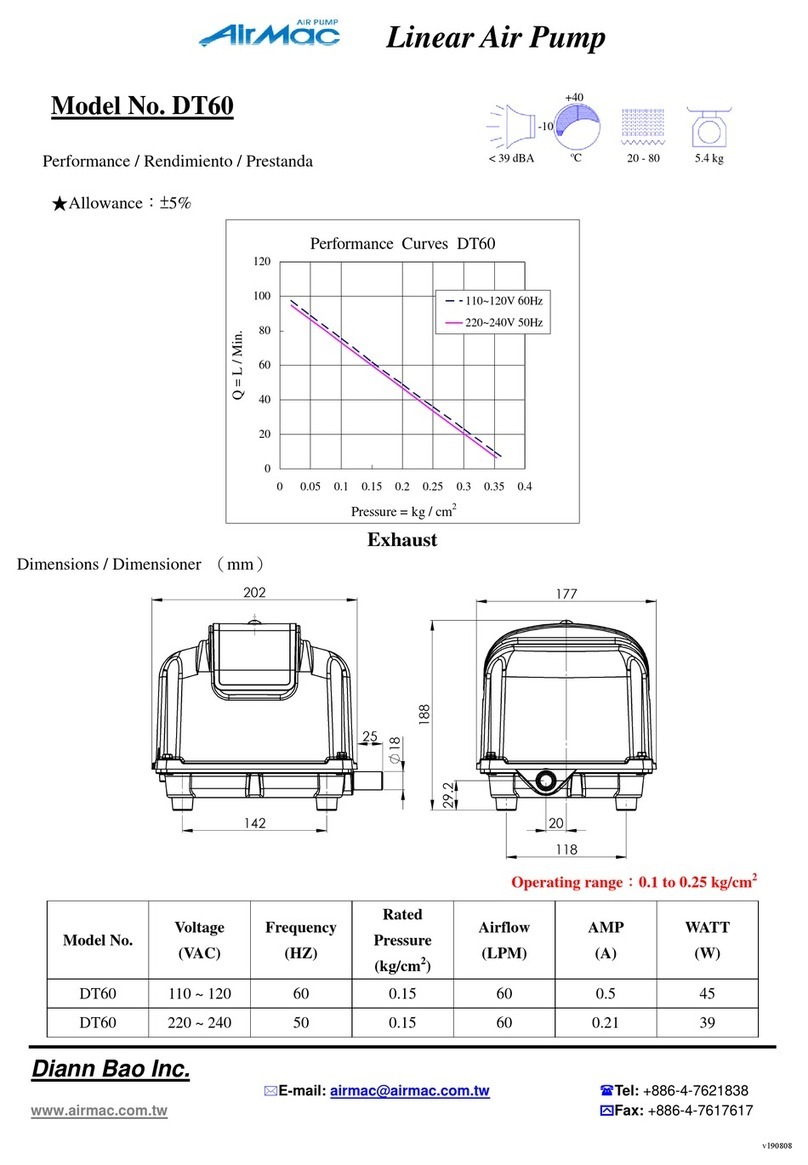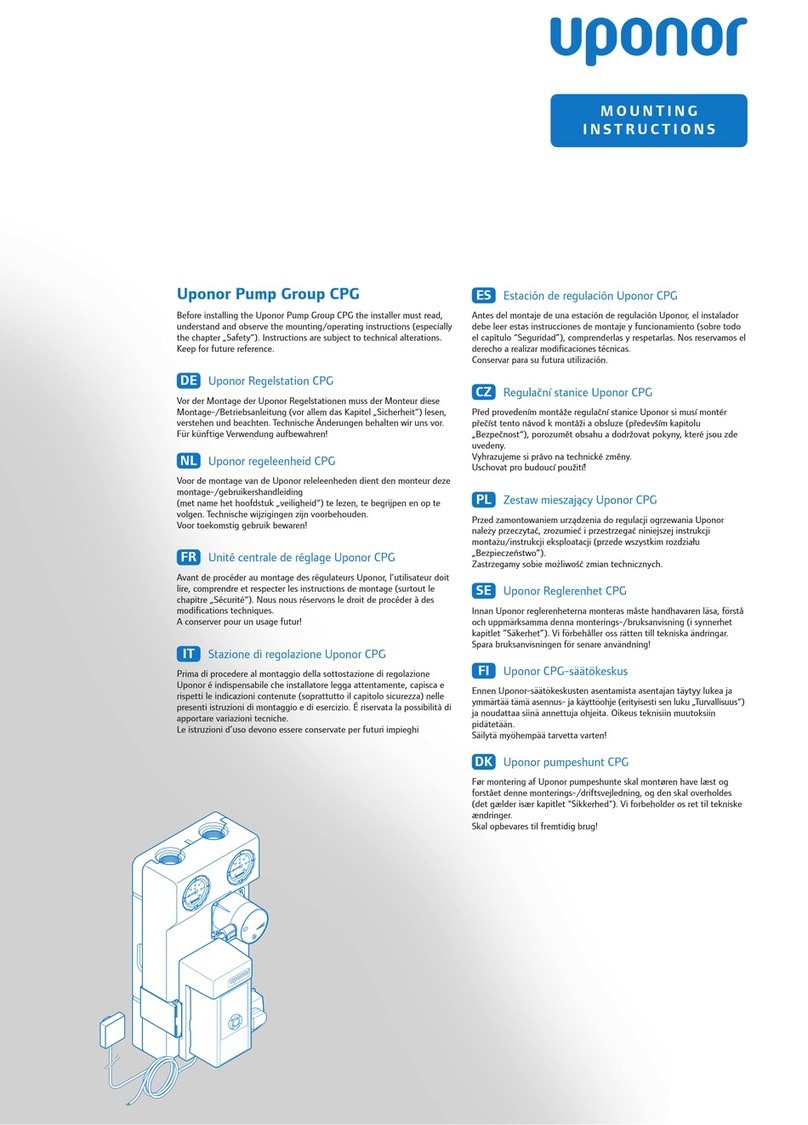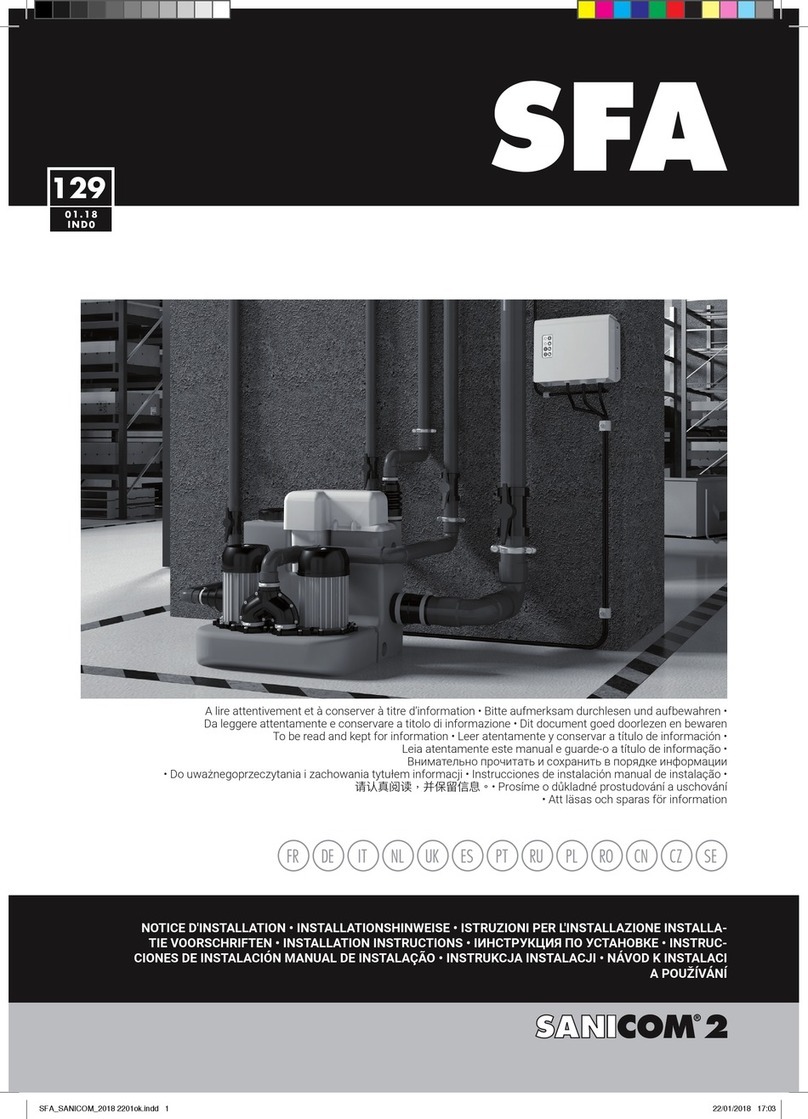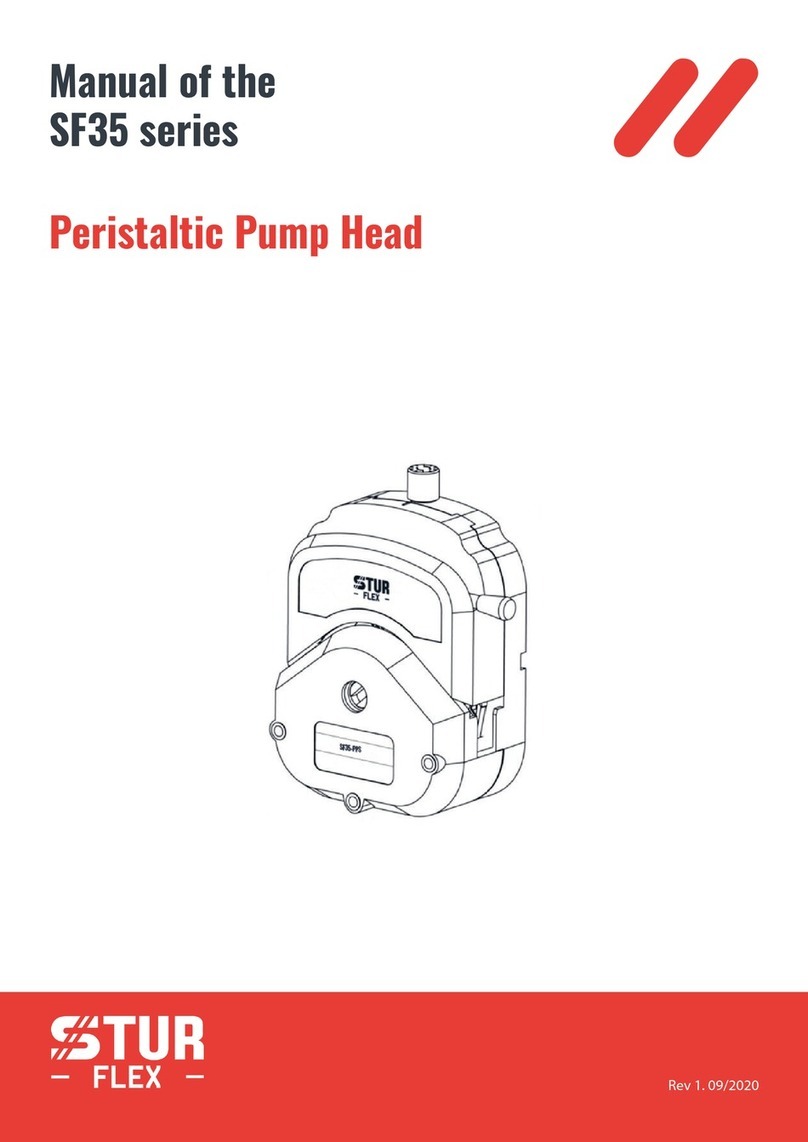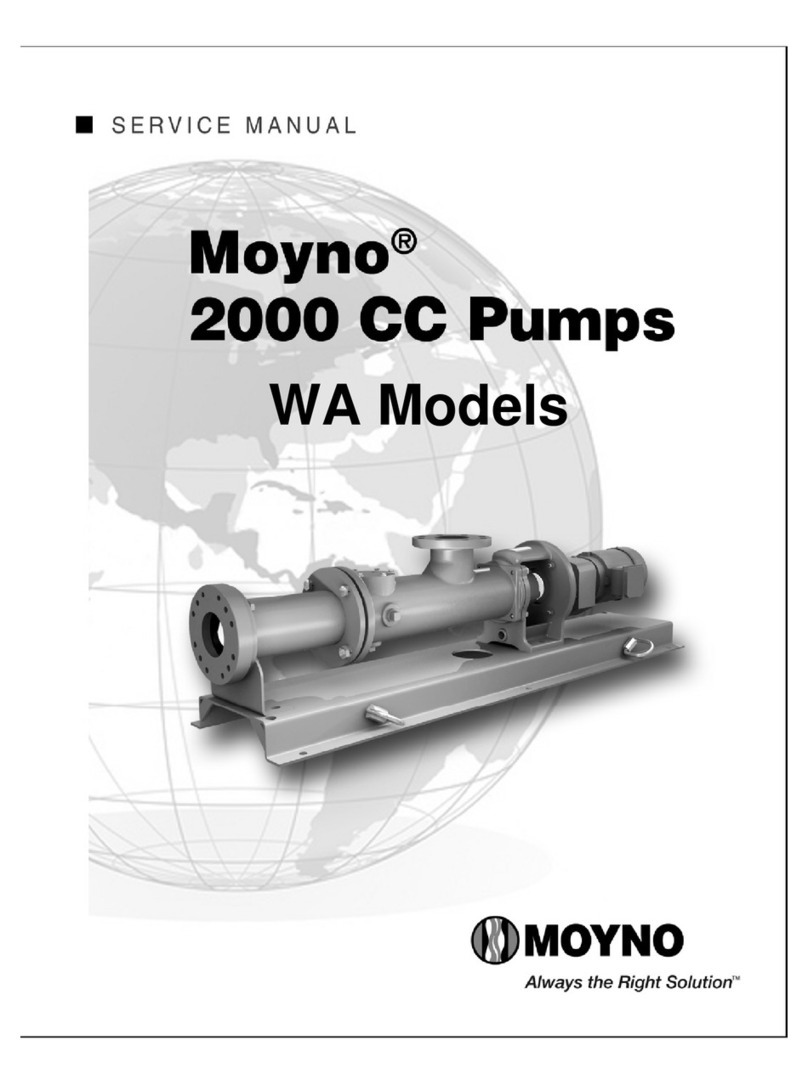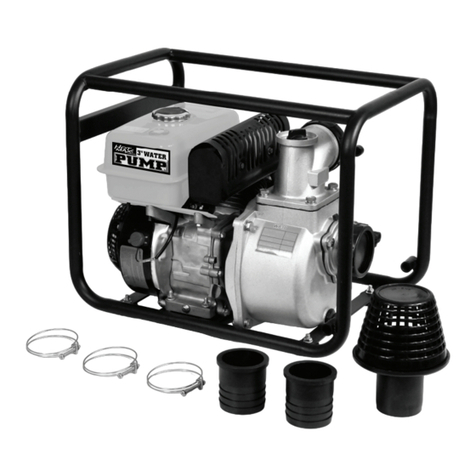KSB ITUR IPR Series User manual

IPR, IPRT
2
Index
1GENERAL ITEMS...................................................... 3
2SAFETY ..................................................................... 3
2.1 SIGNALLING OF WARNINGS IN THIS MANUAL ................. 3
2.2 PERSONNEL QUALIFICATIONS AND INSTRUCTION.......... 3
2.3 RISKS OF FAILING TO COMPLY WITH THE SAFETY
INSTRUCTIONS................................................................. 3
2.4 CONSCIENTIOUS SAFETY AT WORK............................. 3
2.5 SAFETY INSTRUCTIONS FOR USERS AND SERVICE
PERSONNEL .................................................................... 3
2.6 SAFETY INSTRUCTIONS FOR MAINTENANCE,INSPECTION
AND ASSEMBLY WORK....................................................... 4
2.7 MODIFICATIONS AND ARBITRARY MANUFACTURE OF
SPARE PARTS .................................................................. 4
2.8 UNAUTHORISED OPERATION MODES ........................... 4
3TRANSPORT AND STORAGE................................. 4
3.1 TRANSPORT AND HANDLING ...................................... 4
3.2 PROVISIONAL STORAGE/CONSERVATION .................... 4
4GROUP DESCRIPTION............................................. 4
4.1 GENERAL DESCRIPTION ............................................ 4
4.2 DENOMINATION........................................................ 4
4.3 FORM OF CONSTRUCTION ......................................... 4
4.4 NOISE.PERMITTED LEVELS ....................................... 4
5INSTALLATION ......................................................... 5
5.1 CHECK BEFORE ASSEMBLY........................................ 5
5.2 GROUP POSITIONING ................................................ 5
5.2.1 Vertical groups.............................................. 5
5.3 PIPE FLANGE ........................................................... 5
5.3.1 Auxiliary connections.................................... 5
5.4 ELECTRICAL CONNECTION:........................................ 5
5.4.1 Motor connection.......................................... 6
5.4.2 Timer relay adjustment................................. 6
5.4.3 Rotation direction. Check.............................. 6
6START-UP ................................................................. 6
6.1 FIRST START-UP ...................................................... 6
6.1.1 Lubricant....................................................... 6
6.1.2 Filling (priming) of the pump ......................... 6
6.1.3 Final control.................................................. 7
6.1.4 Start-up......................................................... 7
6.1.5 Shutdown...................................................... 7
6.2 SERVICE LIMITS ....................................................... 7
6.2.1 Start-up frequency........................................ 7
6.2.2 Temperature of the liquid to be pumped....... 7
6.3 STARTING UP AFTER STORAGE .................................. 8
7MAINTENANCE/CONSERVATION............................8
7.1 GENERAL INSTRUCTIONS........................................... 8
7.2 MAINTENANCE/INSPECTION ....................................... 8
7.2.1 Checking instructions....................................8
7.2.2 Lubrication ....................................................8
7.3 EMPTYING/DRAINAGE ............................................... 9
7.4 DISMOUNTING .......................................................... 9
7.4.1 Fundamental instructions/observations.........9
7.4.2 Coupling........................................................9
7.4.3 Packing.........................................................9
7.4.4 Pump valves .................................................9
7.4.5 Segments and pump casing..........................9
7.4.6 Reducer box..................................................9
7.5 ASSEMBLY............................................................... 9
7.5.1 Coupling........................................................9
7.5.2 Packing.......................................................10
7.5.3 Pump valves ...............................................10
7.5.4 Segments and pump casing........................10
7.5.5 Reducer box................................................10
7.5.6 Tightening torque of the screws/nuts ..........10
7.6 RECOMMENDED SPARE PARTS ................................. 11
7.7 PREVENTATIVE MAINTENANCE.................................. 11
8OPERATION ANOMALIES ......................................12
9ANNEXES.................................................................13
9.1 SECTIONAL PLANS .................................................. 13

IPR, IPRT
3
1 General Items
This KSB ITUR pump has been developed in
line with current technical levels,
manufactured with great care and put through stringent
Quality Control. The present Instructions Manual will provide
you with knowledge of the pump and the ways it can be
applied.
It contains important instructions to operate the pump
appropriately and profitably. It is important to comply with the
manual in order to guarantee reliability and a long useful life
for the pump, whilst avoiding any possible risks.
This manual does not include any local regulations or any
instructions with regards to assembly personnel, which the
user shall be responsible for.
This group cannot be used in conditions in excess of
those established in the technical documentation
with regards to the liquid to be pumped, flow, speed
(rpm), density, pressure and temperature, and also the motor
power or anything else set out in the instructions manual and
contractual documentation. Check with the manufacturer as
appropriate.
The factory plate shows the model/size, the main service data
and the manufacture number of the pump. Please include
these data in any queries, subsequent orders or requests for
spare parts.
Should you require further details or have a breakdown
problem, please contact the nearest KSB ITUR service agent.
2 Safety
This instructions manual contains fundamental indications
which must be complied with in assembly, service and
maintenance. It must be read by assembly personnel,
competent technical personnel and users before installing and
starting up, and it must be available at all times at the place of
location of the machine.
Proceed not only in line with this main safety chapter, but also
observing the instructions described in other similarly
important safety points.
2.1 Signalling of warnings in this manual
All instructions in this manual which may involve personal
hazard if not complied with are indicated with a general hazard
sign.
Safety instructions which may involve a hazard to
people and facilities if not complied with in
accordance with ISO 7000-0434.
Safety instructions to prevent electrical hazards in
accordance with IEC 417-5036.
Safety instructions which may affect the
equipment and its operation if not complied
with.
The details shown directly on the machine, such as:
- Rotation direction arrow
- Fluid connections identifications
These must be complied with, and conserved in a manner
which ensures they are legible.
2.2 Personnel qualifications and instruction
All Service, Maintenance, Inspection and Assembly personnel
must be duly qualified. The terms regarding responsibility,
competence and supervision of personnel must be regulated
by the user in an exact manner.
Note
Any personnel lacking appropriate know-how must be duly
instructed. This preparation can be obtained upon request by
the machine user to the manufacturer or supplier of the
machine.
Finally, the user must ensure that all personnel have fully
understood the content of the instructions manual.
2.3 Risks of failing to comply with the safety
instructions
Failure to comply with the safety instructions may lead to risks
both for people, the environment and the machine, and may
lead to the loss of any entitlement to claims.
In particular, failure to comply may cause the following
hazards:
- Failure of important machine/facility functions.
- Failure of the prescribed maintenance and conservation
methods.
- Personal hazard resulting from electrical, mechanical or
chemical effects.
- Danger to the environment due to escaping noxious
products.
2.4 Conscientious safety at work
The safety instructions contained in this Manual must be
observed, as must international prescriptions on Health and
Safety at Work and any possible Safety Regulations at the
workplace of the user.
2.5 Safety instructions for users and service
personnel
- The installer must ensure that the parts of the machine
which may create danger due to heat or cold are
protected against accidental contact.
- The protection devices which prevent contact with
moving parts (e.g. couplings) must not be removed whilst
the machine is in service.
- Possible leaks (e.g. through the shaft sealing) of
hazardous products must be channelled in such a
manner as they do not present any risk to people or the
environment, in line with corresponding legislation.
- Electrical hazard must be avoided (see details in the
specific legislation of the country and/or the electricity
supply company).
Note

IPR, IPRT
4
2.6 Safety instructions for maintenance,
inspection and assembly work
The user must ensure that all maintenance, inspection and
assembly tasks are carried out by authorised, qualified,
specialised personnel who have been sufficiently informed
through careful study of the instructions manual.
The pump frame must have returned to environmental
temperature. It must then be depressurised and emptied of
liquid.
It is a fundamental principle that any work on the machine
must be carried out whilst it is shutdown. It is essential to
respect the pump shutdown procedure described in the
instructions manual.
Seres: IPR, IPRT
DN suction nozzle [mm]
Ø of
p
iston
[
mm
]
Type of stroke
All pumps or motor pumps which pump hazardous materials
must be decontaminated.
All safety and protection devices must be installed and put into
operation as soon as work concludes.
Before starting up again, all that described in the First Start-Up
section must be followed.
2.7 Modifications and arbitrary manufacture of
spare parts
The machine must not be modified or changed without prior
agreement from the manufacturer. Only original spare parts
and accessories approved by the manufacturer can guarantee
safety. The use of other components may terminate any
liability for consequences deriving from their use.
2.8 Unauthorised operation modes
The safe service of the supplied pump can only be guaranteed
through correct use, in line with section 4 0of the Instructions
Manual. The operation limits established in the Datasheet
must not be exceeded under any circumstance.
3 Transport and storage
3.1 Transport and handling
The transport and handling of the equipment must be
carried out using suitable means in line with the
weight to be supported. The weight is generally
shown on the delivery note or on the factory plate; if it is not,
and the equipment cannot be handled safely, please contact
KSB ITUR.
Remember that the equipment must never be lifted using the
ring bolts of the different items (e.g. motor and pump ring bolt),
which are exclusively for independent transport.
It is also important not to use the pump and
pipe flanges or joining elements, e.g.
couplings
If the equipment is to be lifted using straps,
these must always be run underneath the
motor and pump support.
When the pumps are dismounted from their transport
pallet, suitable means must be used to ensure the
stability of the equipment, until it is finally secured at
its definitive location.
3.2 Provisional storage/Conservation
During provisional storage, it is necessary to protect the parts
with preservation products from contact with the low alloy
liquid (e.g. grey casting, nodular casting, etc). Preservation
products available on the sector market can be used, in line
with the manufacturer's instructions on application and
disposal.
The pump, or motor pump, shall be deposited in a dry site
where the relative humidity is as constant as possible.
When stored outside, it is necessary to keep the pump/motor
pump in an impermeable box, ensuring it does not come into
contact with external humidity.
Protect the stored product from humidity, dirt,
parasites and unauthorised access. All
openings must remain closed, and must not be opened until
necessary during assembly.
Note
The shiny (mechanised) parts and surfaces of the pump must
be protected from corrosion using silicone-free grease or oil.
The electric motor must be disconnected, the
connection cables removed and the terminal box
closed with its cover on.
The switchboards must be in vertical position and
disconnected.
4 Group description
4.1 General description
Positive movement pumps with two cylinders and alternating
pistons. Used mainly for general vessel services: emptying
bilges, ballast, hosing, fire extinguishers, etc.
4.2 Denomination
IPRT-100/110 L
4.3 Form of construction
Constructed with a vertical attachment base and electrical
motor for semi-elastic coupling. The front suction and the two
side discharges (except for IPR-125/150, with side suction and
discharge), allowing discharge to be selected through either of
the two ends.
Note
They have a relief bypass valve, adjustable and with
automatic opening.
Note Bearings: Includes bearings and friction bearing bushes, all
lubricated with oil or grease.
Shaft sealing: Packing.
4.4 Noise. Permitted levels
The acoustic pressure level of these pumps is less than 96 dB
(A) at 1 m in any operation point within the operation range
without cavitation. The acoustic power is less than 110 dB (A).

IPR, IPRT
5
5 Installation
The design of the pipe systems, anchorings
and other installation areas corresponds to
other parties. KSB ITUR only offers details and comments as
a help, but does not assume any responsibility with regards to
the design, assembly and operation of any installation. We
recommend that customers should check with a specialist in
the design of castings, pipes, wells, etc, to supplement and
interpret the information provided by KSB ITUR and to ensure
proper operation.
5.1 Check before assembly
Before positioning, check that the assembly base is in line with
the dimensional plan of the equipment.
The upper surface of the base must be horizontal and flat.
If the anchor pins are to be placed in existing holes, place the
anchor pins in their orifices suspended from the pump.
Do not connect the suction and discharge nozzles until the
equipment is completely installed on its base.
5.2 Group positioning
5.2.1 Vertical groups
Levelling
Use a spirit level to level the equipment. Use wedges to alter
the height at different points. The maximum deviation
permitted is 0.2 mm/m.
The separation between the two coupling halves must be
maintained.
The equipment must always be aligned after
mounting and preparing for start up.
Pump - motor alignment
The equipment is aligned at factory, and this alignment must
never be lost. The following instructions must be followed
when dismounting or returning the motor:
- Check that the flange support surface of the motor
support and of the motor itself are perfectly clean and
smooth.
- Check the correct separation between the two halves of
the coupling.
Check that the alignment between both shafts is correct by
turning the equipment by hand.
5.3 Pipe flange
In no case can the pump be used as a fixed point for the
pipes.
The pipe system must at no time exercise force (due
to connection, thermal variation, etc.) greater than
those permitted in the pump.
The short pipes must be of at least the diameter of the pump
connections. The diameter of long pipes is, in some cases,
determined by economic criteria.
Transition pieces at larger diameters must have an extension
angle of around 8°, in order to prevent pressure drops.
The convenience of installing foot valves
when the pump is working in suction or
retention when loaded, along with seal valves, will depend on
the type of installation.
Note
Note
The thermal expansions of the pipes must be compensated
with suitable measures, in order not to exceed the maximum
strains permitted on the pump.
The diameters of the pipes, valves and accessories must be
calculated in line with the load losses envisaged in the
installation, meaning the fluid speeds will be:
- Speed in the discharge pipe: from 2 to 3 m/s
- Speed in the suction pipe: from 1 to 2 m/s
Exceeding the admitted strains of the pipes may lead to leaks
in the pump and to the fluid escaping. Hazard of
death with hot liquids!
The suction and discharge nozzle covers of the
pump must be removed before connecting the pipes.
Before starting up a new installation, it is necessary to
thoroughly clean the tanks, pipes and accessories by brushing
and blowing. Welding material, scales and other impurities are
often cast off some time after. We recommend using an
oversized sieve filter in suction in order to prevent dirt larger
than that permitted by the pump from coming in.
5.3.1 Auxiliary connections
The equipment is normally delivered mounted and ready for
immediate operation, with only the hydraulic and exterior
electrical connections being necessary.
Note When using clean fluids, the cooling of the mechanical seal is
by way of the recirculation of the pumping fluid (it is not
necessary to inject exterior fluid).
Auxiliary pipes are designed exclusively to
support internal stresses due to the pressure
of the circulating fluid, to which end it is forbidden to subject
them to additional exterior stresses (e.g. for support, etc.)
Note
5.4 Electrical connection:
The electrical connection must be carried out by a
specialist electrician. Applicable regulations must be
complied with.
Check the mains voltage available against the factory plate
data and choose the appropriate connection.
The technical connection conditions and the conditions
of the local energy supply company must be observed
when carrying out the connections.
We strongly recommend the use of a safety circuit
breaker for the motor and a thermistor associated to a
trigger device.
These instructions apply to asynchronous three-phase
standard electric motors with a squirrel cage both in
horizontal and vertical execution, in IP-23, IP-54 and IP-55
protection grades, with frame sizes of between 56L and
355S, both inclusive, with voltages of 200 to 500 V
between phases.

IPR, IPRT
6
5.4.1 Motor connection
Whilst connecting the cables, ensure it is not possible
for voltage to appear.
Check that the earth connection is in line with local
regulations.
Connection in single speed motors
Direct start-up:
In direct start-up the motor can be used in two different
connections:
The voltage and the connection, e.g. 400 VY, 240 VD is
stamped on the motor plate. This means that the motor can
connect at 400 volts in star connection (Y) or at 240 volts in
delta connection (D).
Star connection Delta connection
Star-delta start-up:
In star-delta start-up, the line voltage must coincide with the
voltage shown on the motor for delta start up (D). The six
terminals indicated in the following diagram will be connected:
Connection to the star-delta contactor
5.4.2 Timer relay adjustment
In the star-delta start-up of three-phase motors, it is necessary
to ensure that the passage from star to delta takes place
quickly. Prolonged time will cause damage to the pump.
Timer relay adjustment in the star-delta connection:
Motor power Time adjustment -Y
≤30 kW < 3 sec.
> 30 kW < 5 sec.
5.4.3 Rotation direction. Check
Check the motor rotation direction by starting
up and immediately shutting down. The
rotation direction must correspond with that shown by the
pump arrow located on the pump casing or support. If the
rotation direction is not correct, any two phases L1, L2 or L3 of
the power cable must be inverted in the motor terminal box.
6 Start-up
Start-up shall be carried out when all the necessary
mechanical, hydraulic, electrical and pneumatic connections
are complete.
The safety bypass valve should be regulated before starting
up, bearing in mind the work pressure values and the
maximum permitted by the facility.
Motor checks
When making the electrical connection, ensure the
type of current and nominal voltage shown on the
motor's factory plate concur with the type of current
and the mains voltage in the place of installation.
Follow the indications described in the motor manual.
6.1 First start-up
6.1.1 Lubricant
BEARINGS:
Reducer box oil:
The pump leaves the factory without oil in the
reducer box. Once assembled, proceed to fill
it. See section 7.2.2.
Note
Lubricated with grease. PUMP WITH GREASE NIPPLES:
The pump leaves the factory with the bearings greased for
approximately 1000 hours of operation. See lubricant in
section 7.2.2.
6.1.2 Filling (priming) of the pump
The pump must be primed before starting up for the first time
or following a long period of inactivity. To do this:
EQUIPMENT IN LOAD:
1. Disconnect the voltage from the motor or batteries.
2. Close the suction valve and the discharge valve.
3. Remove the venting plug located in the casing or open a
discharge pipe vent (before the check valve).
4. Partially open the suction valve until the liquid overflows
through the vent.
5. Close the vent.
6. Fully open the suction valve and partially open the
discharge valve.
7. Start up the motor and check the rotation direction of the
pump.
8. Fully open the discharge valve.
EQUIPMENT IN SUCTION:
1. Disconnect the voltage from the motor or batteries.
2. Remove the venting plug located in the casing or
open an discharge pipe vent (before the check
valve).
3. Close the discharge valve.
4. Pour the liquid to be pumped through the vent until it
overflows.
Note 5. Close the vent and partially open the discharge
valve.
6. Start up the motor and check the rotation direction of
the pump.
7. Fully open the discharge valve.
The priming should be checked in subsequent start-ups.

IPR, IPRT
7
Shaft sealing
Packing: The gland nuts must be gently tightened (by hand).
The gland must form a right angle to the shaft. There should
be a larger leak after filling the pump and before starting up.
Ensure that the gland boxes in the piston spindles are packed
and moderately tightened.
6.1.3 Final control
Make the final check of the group alignment in accordance
with 5.2.1.The coupling/shaft must allow easy manual rotation.
Check all the auxiliary connections are
correct and functioning.
According to the rules on the prevention of
accidents at work, equipment cannot be started up
without protection for the coupling. If the buyer has
expressly requested that this guard be excluded from supply,
it must be provided by the user.
6.1.4 Start-up
Before starting up the group, check all the sections with
regards to chapter 6.
The start-up must be carried out with the impulsion and
suction valves completely open.
Discharge the valve chamber using the different airing cocks.
When the pump is working “heavily”, regulate the volume of air
in the air tank by opening the corresponding cock.
Bypass safety valve: All models have an internal safety valve
which, should the impulsion pressure exceed a calibration
value, recirculates the fluid to aspiration. The danger of the
pump and facility being subjected to excessive pressure is
therefore avoided. The maximum pressure value depends on
each facility, and in consequence this valve should be
regulated as necessary in each case. In order to regulate the
valve, it is important to remember that there is generally a
pressure difference from opening until it is capable of
recirculating all the flow (maximum system pressure).
Depending on the fluid, this margin may be greater than 1.5
kg/cm2 .
Proceed as follows to regulate the valve:
- With the pump shut down, remove the protector cap and
release the tensor until we see that the spring does not
exercise any pressure or the thread is introduced by at
least two threads, in such a manner as it does not shoot
out when starting up the pump. Replace the protector
cap . If this is not returned, incoming air may invalidate
the process when starting up the pump.
- If not done already, correctly prime the pump.
- Ensure there is a pressure gauge (of suitable scale) in
the pump discharge.
- Start up the pump and proceed to gradually close the
impulsion valve to the full. In this manner the impulsion
gauge will show the pressure necessary to recirculate all
the pumped flow.
- Replace the protector cap and gradually tighten the
tensor until the pressure gauge shows the maximum
value permitted in the facility.
- Shut down the pump and set the position of the tensor
with the counternut or with the protector cap.
If the regulation of the valve is unduly altered, there is
a danger of excess pressure (breakage of pipes
and/or pumps) and/or destruction of the motor
through excess required power. The bypass valve is a
SAFETY valve and should not be used to regulate the flow or
the discharge pressure. Doing this may jeopardise the entire
facility.
6.1.5 Shutdown
Close the discharge pipe valve.
If there is anti-return in discharge with counterpressure, leave
the discharge valve open.
Note
- Shutdown the motor. Check that shutdown is normal.
- In prolonged periods of non-operation, close the suction
pipe valve and the auxiliary connection valves.
- In suction pumps using a low vacuum tank, the supply of
liquid must also be maintained at the shaft seal whilst the
pump remains shutdown.
- The pump must be protected from freezing whenever this
risk exists, and must be emptied in prolonged periods of
non-operation.
If, whilst the pump is shutdown, it must remain on standby for
service, start up at regular intervals for around 5 minutes (see
also 7.2.1):
- Fire pumps: 1x/month, at minimum.
- Drink-safe water pumps: 1x/48 hours, at minimum.
- Reserve pumps: 1x/week, at minimum.
(It is best to change the operating pump every day).
The seal tightness and function of the auxiliary connections
must be examined during these start-ups.
6.2 Service limits
6.2.1 Start-up frequency
In order to prevent abnormally high temperatures and
overloading of the motor, pump, coupling, seals, etc, the start-
up frequencies indicated below must not be exceeded:
MOTOR POWER MAX. START-UPS/HOUR
Up to 3 kW 20
From 4 to 11 kW 15
From 11 to 45 kW 10
From 45 kW 5
6.2.2 Temperature of the liquid to be pumped
Never operate the pump at a temperature
higher than that shown in the data sheet
and/or factory plate.
Note

IPR, IPRT
8
6.3 Starting up after storage
If the storage and/or shutting down of the pump has been for
a prolonged period of time (over 6 months), it is necessary to:
- Check the state of the joints.
- Check the levelling.
- Check all the auxiliary connections.
- Renew the lubrication of the bearings (where fitted).
- Change the packing (when fitted).
- After a short storage period, simply turn the pump shaft
manually to unlock the rotor equipment.
- Follow the specific post-short storage instructions in the
motor manuals and other items.
- Observe all the steps shown in the "Start-up" section.
If the equipment is to be shutdown for a
certain period of time and there is the
possibility of freezing temperatures, it is necessary to
completely drain the pump in order to prevent any
deterioration from the freezing of the contained fluid.
7 Maintenance/Conservation
7.1 General instructions
Before dismounting, ensure that:
The motor must not be started up involuntarily, and
so must be disconnected from the grid (e.g. removing
cut-outs, unplugging, disconnecting the automatic
circuit breaker, etc.) or the start-up batteries (disconnect
operating energy).
The pump is free of pumped fluid, cleaning it
internally with appropriate liquid whenever it is a
hazardous fluid (hot, contaminant, inflammable…)
7.2 Maintenance/inspection
7.2.1 Checking instructions
During the first minutes of operation:
In cases of packing seal:
- There is no leak; immediately loosen the gland to obtain
small dripping.
- Excessive fluid leak; leave to settle for 10 minutes; tighten
the gland by turning 1/6th and leave for 5 minutes.
Repeat the process until between 20 and 60 drops per
minute are achieved.
After a few hours operation:
Check the bearing temperature at the point in
the bearing location area. Normal
temperature can reach up to 40°C above environmental
temperature, but must never exceed 90°C.
Observe the possible anomalies shown in point 8 of this
manual
The reserve pumps should be started up and shutdown once
a week, in order to ensure they are always in service
conditions.
7.2.2 Lubrication
Before lubricating the pump, ensure that:
The pump is shutdown and cannot be started up
accidentally.
The bearing support temperature is less than 40ºC,
in order to prevent burns to the hands. To do this,
measure the temperature with a thermocouple.
BEARINGS:
Pumps lubricated with oil
The pump leaves the factory without oil in the
reducer box. Once assembled, proceed to fill
it.
Note
Oil filling
Note - Release the upper reducer cap.
- Pour oil through this orifice until the level reaches the
sight.
- Replace the upper cap.
Oil change
- Before changing the oil, start up the pump for a few
minutes in order to fluidifly it.
- Release the upper filling cap and the lower drainage cap.
- Empty the support oil and let it drain off. Once the
reducer box has been emptied, clean the cover and the
bearings using petrol.
- Replace the lower cap and proceed to fill as indicated in
the preceding section.
Oil chart
Oil recommended for normal use (bearing temperature up to
+70ºC), in line with the operation revolutions and the size of
the pump (ISO-VG oil grade is shown)
Sizes /
rpm Oil Regularity [h]
(1) Quantity [l]
ALL ISO VG 100 1000 5
(1) First oil change at 100 hours
Lubricated with grease. PUMP WITH GREASE NIPPLES:
The pump leaves the factory with the bearings greased for
approximately 1000 hours of operation.
For lubrication, a chart is attached with the amount of grease
to be applied in each greaser, along with the regularity.
Note
Size Regularity [h] Amount of
grease [g]
ALL 4000 30
Lubricant change
In order to completely change the grease, first dismount the
bearings and carefully clean their positions in the support in
order to remove old grease.
Type of grease:
We recommend using lytic-based lubrication grease with
antioxidant additives, of consistency 2, in line with DIN-51502
K2K.

IPR, IPRT
9
7.3 Emptying/Drainage
The emptying and drainage of pumps used to expel
liquids which are a health hazard must be carried out
in such a way as there is no risk to people or to the
environment, in line with legislation. If necessary, use
protective clothing and mask.
7.4 Dismounting
7.4.1 Fundamental instructions/observations
Before dismounting, ensure the pump cannot
be started up.
The suction and discharge valves must be closed.
The pump frame must have returned to environmental
temperature.
The pump frame must be depressurised and emptied.
Comply with all safety measures in accordance with 7.1.
When working on the motor, also take into account the rules
and instructions of the manufacturer.
7.4.2 Coupling
1.- Remove the coupling guard
2.- Uncouple the pump from the motor, as indicated:
2.1.- COUPLING WITHOUT DISTANCER. Release the
motor attachment bolts and remove the motor along
with the male coupling.
2.2.- COUPLING WITH DISTANCER. Release the
coupling attachment screws and remove the
intermediate pipe. Separate the male coupling.
3.- If you need to release the coupling, use an extractor. Never
bang in order to extract, as this may cause serious
damage to the bearings.
7.4.3 Packing
- Release the gland.
- Extract the seal. If the lantern ring is also extracted, note
down the order.
7.4.4 Pump valves
- Remove the nuts from the valve box cover, and then
remove the gaskets. Also remove the high cap nuts and
their seals.
- Remove the cover from the valve box. Also remove the
seal for the valve box. The upper chamber and the
discharge valves will then be visible.
- Remove the discharge and suction valves.
- Release the pin which secures the nut to the spindle.
- Release the nut which secures the suction valve. All the
valve pieces can now be released.
- Make a visual inspection to see whether the valves and
their elements are in the correct position.
- If the pieces are in a good condition, clean them and
reassemble.
- If they are not in a good condition, replace the damaged
part.
7.4.5 Segments and pump casing
- Separate the cross guide support and the reducer box of
the valve box.
- Release the male and female couplings, unscrewing the
Allen setscrew.
- Release the motor lantern by unscrewing the hexagonal
head screws and the nuts with their washers.
- Position clamp bolts in the motor lantern and position the
hooks of a hoist in the clamp bolts.
Note - Release the nuts and flat washers which join the cross
guide support and the valve box.
- Also release the adjustment screws of the casing and the
nuts.
- Lift the cross guide support and reducer box, exposing
the segments, and simply remove the pump casing.
- Make a visual inspection to check the state of the
segments and the casing. If they are in a good state,
clean them and return them, otherwise replace them.
7.4.6 Reducer box
Dismount the reducer box in reverse order to assembly.
7.5 Assembly
7.5.1 Coupling
1.- Assemble the pump (if it has been dismounted)
2.- Couple the pump to the motor, as indicated:
2.1.- COUPLING WITHOUT DISTANCER. Position the
motor in place, introducing the male coupling.
Position the pins, but DO NOT tighten them until
alignment is complete.
2.2.- COUPLING WITH DISTANCER. Mount the male
coupling, introducing the teeth in the rubber plugs
located in the female coupling. Mount the
intermediate pipe and secure it using the screws,
both to the plate and to the male coupling.
3.- Align the coupling (see point 5.2.1 of this manual)
4.- Mount the coupling guard.

IPR, IPRT
10
7.5.2 Packing
- Cut the new packing, forming as many rings as required.
The cuts, seen from above, may be straight or inclined at
45º. (see figure)
- We recommend leaving a small clearance of 0.5 mm in
the packing cut.
- Position the rings one by one, pushing on them but
without excessive force. The rings shall be introduced
with the cut ends alternated 90°.
- Take care to introduce the ring in the same order as
before.
- Once the packing has been introduced, check that the
shaft rotates freely without any stiff points.
- The gland must not penetrate the entire free length. If
necessary, introduce more rings.
- Gently tighten the gland nuts.
- In order to determine the appropriate torque of the
packet, proceed as indicated in point 6.1.2 of this
manual.
7.5.3 Pump valves
- Assemble the suction and discharge valves on the shaft
with all the corresponding elements. Replace the Parker
flange. Thread the nut on the spindle and secure with a
pin.
- Position the valve with the valve shaft in the
corresponding place.
- Position the threaded studs in their place, and then
position the valve box seal, the cover, the flat washers
and the nuts, and tighten.
- Position the valve pressure screws, the washers and the
high cap nuts and tighten.
7.5.4 Segments and pump casing
- Introduce the casing with the help of a plastic hammer.
The segments shall be positioned with their cuts
separated by 180º.
- With the help of the hoist, position the cross guide
support and the reducer box of the valve box. Position
the flat washers and the nuts, and tighten.
- Release the clamp bolt hooks and then release these
from the motor lantern.
- Position the motor on the lantern motor.
- Secure it with its screws, washers and nuts.
- Also position the adjustment screws of the casing and the
nuts.
- Position the male and female couplings, securing them
with their setscrews.
7.5.5 Reducer box
- Heat the conical bush bearings on the spiral screw shaft
and place on the shaft.
- Place the key on the shaft with the help of a hammer,
and place it in the gearing, banging with a plastic
hammer. Position the circlip with the help of the
appropriate tool.
- Mount the lower conical bush bearing of the spiral screw
shaft on the box, and cover and tighten with Allen
screws. Place a flange in the centre, apply sealant, then
thread and place the reducer shaft with the gearing and
finally the spiral.
- Apply grease to the upper bearing of the vertical shaft
and position it with the help of a hammer.
- Place sealant on the reducer box cover and put it in place
with the help of a plastic hammer. Tighten the Allen
screws.
- Position the reducer shaft bearings with the help of a
normal hammer, a plastic hammer and a pusher.
- Replace the seals on the covers and apply sealant, and
then tighten with Allen screws.
- Position the hatch cover of the reducer with its seal.
7.5.6 Tightening torque of the screws/nuts
Steel Stainless steel
ISO Metric
thread Tightening Torque in [N·m]
(for non-lubricated thread)
M4 3.1 2.15
M5 6.1 4.25
M6 10.4 7.3
M8 25.2 17.7
M10 49.5 34.8
M12 85.2 59.9
M16 211 148
M20 412 290
M24 710 276
M27 1050 409
M30 1420 554

IPR, IPRT
11
7.6 Recommended spare parts
Recommended spare parts (1)
Piece denomination Reference No. (2) Start-up 2 years 5 years
Flanges (set) --- 1 2 5
Packing --- 1 2 5
Valve spring (set) --- 1 2
Segments (set) --- 1 2
Bearing (set) --- 1 2
Lip seal (set) --- 1 2
Lantern ring (set) --- 1 2
Shaft bushing (set) --- 1 2
Shaft casing (set) --- 1 2
Bearing bush (set) --- 1 2
Flexible coupling part (set) --- 1 2
Safety ring (set) --- 1 2
Key (set) --- 1 2
Coupling --- 1
Piston casing (set) --- 1
Pistons (set) --- 1
Valves (set) --- 1
(1) Amounts recommended for a continuous service pump.
(2) Check specific sectional plan for each pump
7.7 Preventative maintenance
Nº DESCRIPTION OF THE OPERATION TO BE CARRIED
OUT PROCEDURE REGULARITY CONSEQUENCE
1 Check the valve vents Visual inspection Weekly
2 Check for packing leaks Visual inspection Weekly 16, 19
3 Check the support oil level Visual inspection Weekly 20, 21
4 Check for leaks between the valve box and the cover Visual inspection Monthly 15
5 Check for leaks between flanges Visual inspection Monthly 15
6 Check for grease or oil leaks Visual inspection Monthly
7 Check for heating of the bearings With thermocouple Quarterly 3, 6, 14 Dismount
the support
8 Check tightness of connecting bolts for cover/valve box,
cover/reducer box Manually Twice a year 13
9 COMPLETE PUMP CHECK
Check and dismount the
pump. See point 7 of the
manual
Yearly 1, 2, 4, 5, 6, 7, 8, 10,
11, 20, 21
10 PISTON CASING SEGMENTS DETERIORATION Dismount pistons, visual
inspection Yearly
11 Check for wear of the shaft and bearings Dismount support visual
inspection Yearly
12 Change the rubber coupling plugs See point 7.5.1 of the
manual Yearly
13 Check and align the coupling See point 5.2.1 of the
manual
Twice a year and
every time they are
dismounted
14 Check functional characteristics loss Instrument reading In accordance with
use
Check the
installation, 9
15 Change the flanges Manually Every time they are
removed
16 Tighten gland See point 6.1.2 of the
manual
When the leaks are
excessive
17 Check for wear of the gears Dismount the casing. Visual
inspection Yearly
18 Check the relief valve spring Manually Twice a year
19 Change the packing See point 7.4.3 and 7.5.2 of
the manual Every 4000 hours
20 Change the reducer oil See point 7.2.2 of the
manual
First change 100 h
Others 1000 h (1)
21 Change the grease of the bearings See point 7.2.2 of the
manual 4000 hours
(1) If the environment is dusty, humid or aggressive, the oil change should be carried out more often

IPR, IPRT
12
8 Operation anomalies
Bang inside the drive reducer
| The pump works "heavily", the valves bang
| | Metal bang on the side part of the pump
| | | Cause Solution
x The cross bolt has become loose Tighten the safety screw within the cross piece
and secure again
x The rod bearing has too much clearance. Remove the adjustment sheets, and, if necessary,
tighten the bearing.
x The piston spindle in the crosspiece is set Tighten the counternut
x The pump takes in air. The suction pipe takes in air. The seal cover in the suction valve spindle is not
tight.
x Formation of steam in the pump chamber, the liquid handled
is too hot, the suction height is too high.
The start of the suction pipe is not correctly
submerged.
x The piston nut has become loose Tighten it
x The valves have become loose Tighten them
x The valve plates have become deteriorated due to impurities Replace them

IPR, IPRT
13
9 Annexes
9.1 Sectional plans
Sectional C-606, IPR-100

IPR, IPRT
14
Ref. Denomination Ref. Denomination Ref. Denomination
0 Reducer box 51 Safety ring 101 Flat washer
1 Reducer box cover 52 Allen screw 102 Flat washer
2 Lip seal cover (crown) 53 Lip seal 103 Stud
3 Cover 54 Bearing 104 Nut
4 Cross guide support 55 Stud 105 Flat washer
5 Gland cover (with guide) 56 Nut 106 Vacuum breaker valve
6 Valve box with feet 57 Flat washer 107 Plug
7 Valve box cover 58 Screw 108 Flange
8 Rod 59 Nut 109 Discharge cock
9 Crosspiece 60 Flat washer 110 Flange
10 Lubrication cover 61 Stud 111 Suction stud
11 Glands 62 Nut 112 Nut
12 Discharge valve casing 63 Flat washer 113 Flat washer
13 Suction valve casing 64 Allen screw 114 Parker flange
14 Suction and discharge valve 65 Allen screw 115 Hatch cover of the reducer
15 Spiral wheel 66 Flat washer 116 Allen screw (reducer hatch cover)
16 Spiral screw 67 Motor shaft flange 117 High cap nut
17 Return valve casing (by-pass) 68 Lip seal 118 Screw
18 Return valve (by-pass) 69 Safety ring 119 Nut
19 Spring guide (lower side) 70 Key 120 Flange
20 Spring guide (upper side) 71 Screw 121 Flange
21 Return valve spring 72 Nut 122 Flange
22 Spring guide plug (return valve) 73 Oscillating bush bearing 123 Washer
23 Suction and discharge valve guide 74 Threaded cock 124 Washer
24 Intermediate valve bushing 75 Plastic pipe 125 Flange
25 Valve spring 76 Level sight 126 Narrow nut
26 Valve shaft 77 Filling and emptying plug 127 Pin
27 Valve shaft stopper stud 78 Bearing 128 Pin
28 Piston casing 79 Safety ring 129 Thread for back of valve box
29 Male piston 80 Ball grease nipple 130 Plug for emptying valve box
30 Female piston 81 Safety ring 131 Piston shaft packing
31 Spacer ring 82 Hexagonal head screw 132 Crosspiece plug
32 Piston shaft 83 Safety ring 133 Key for pin
33 Piston shaft nut 84 Flexible pin 134 Air filter
34 Valve shaft nut 86 Stud 135 Nut
35 Pressure shaft guide bushing 87 Nut 136 Flat washer
36 Reducer shaft 88 Parker flange 137 Flange for sight
37 Rod bushing 89 Stud 138 Screw
38 Stopper washer for roller bearings 90 Nut 139 Screw
39 Crankshaft counterweight 91 Segment 140 Motor
40 Spiral crown sleeve 92 Casing adjustment screw 143 Suction flange joint
41 Cross bolt 93 Nut 144 Discharge flange joint
43 Rod cover 94 Joint 145 Copper flange
44 Fan 95 Flange for valve box 146 Copper flange
45 Female sleeve (pump side) 96 Return valve flange joint 147 Fan protection grid
46 Male sleeve (motor side) 97 Small return flange joint 148 Screw for grid
48 Allen setscrew (cone tip) 98 Return stud 149 Screw
49 Key 99 Screw 150 Washer
50 Key 100 Nut 151 Hexagonal head screw

IPR, IPRT
15
Sectional C-607 IPR 125/150

IPR, IPRT
16
Ref. Denomination Ref. Denomination
1 Motor lantern 63 Rod base
5 M16x55 stud attachment reducer-lantern 64 Lower rod bushing
6 M16 nut 65 Pin bush bearing
7 Flat washer with bevel for M16 66 Adjustment screw
8 Female sleeve 67 M12 nut for adjustment screw
9 Male sleeve 68 Pipe of Ø4x240
10 Bearing Nº 3310 angular contact (male sleeve) 69 Rod bolt
11 Separation washer 70 Safety washer (circlips) for orifice
12 Separation bushing 71 Crosspiece
13 Bearing Nº 3308 angular contact (pinion) 72 Spindle
14 Power takeoff shaft (pinion) 73 Lubrication ring
15 Reducer driveshaft lip seal holder 74 CLIFCO adapter of 1/4" gas for lubrication ring
16 Lip seal of 78x100x10 (reducer driveshaft) 75 M12x44 stud (lubrication ring)
17 Allen screw M10x15 (driveshaft cover) 76 M12 nut (lubrication ring)
18 Safety washer for driveshaft 77 Flat washer with bevel for M12
19 Sleeve attachment nut M30x1.5 78 M10x35 screw for lubrication ring
20 Key of 8x7x70 79 M10 nut for lubrication ring
21 Upper reducer casing 80 Cross guide
22 Lower reducer casing 81 M12x35 screw (plating cross guide)
23 M12x46 studs reducer casing 82 Flat washer with bevel for M12
24 M12 nut 83 M16x50 stud for cross guide
25 Flat washer with bevel for M12 84 M16 nut for cross guide
26 Ball grease nipple 1/4" for gas 88 M20x75 stud for reducer
27 Filter 1/2" gas for reducer 89 M20 nut for reducer
28 Outflow plug 3/8" gas reducer 90 Plating
29 Washer for 3/8" gas 91 Plating cover
30 Viewer level for reducer casing 1" gas 92 Screw for plating cover M10x20
31 Flange for 1" gas viewer 93 Allen screw of M12x30 for plating
32 Driveshaft 94 Allen screw of M10x20 for output shaft lip seal holder
33 Bearing Spherical rollers nº 22308 (driveshaft) 95 O-ring of Ø10xØ14x2 for pin
34 Bearing Angular contact nº 3308 (driveshaft) 96 Glands for piston cover
35 Crown 97 Gland holder cover (piston)
36 Key for driveshaft of 14x9x50 98 M12x64 gland stud
37 Safety washer for Ø40 shaft 99 M12 nut for gland
38 Driveshaft nut M40x1.5 100 Dispersion bushing
39 Crown separation bushing 101 Packing rings of 10
40 Driveshaft solid cover (reducer) 102 M16x55 for gland holder cover
41 Allen screw of M8x15 for driveshaft solid cover 103 M16 nut for gland holder
42 Output shaft 104 Flat washer with bevel for M16
43 Drive gear 105 Seal press flange
44 Drive gear key 28x16x65 107 Segment
45 20x12x70 key for counterweight 108 Segments separation washer
46 Bearing Spherical rollers nº 22218 HL 109 Piston casing
47 Separation washer (lubrication ring) 110 Cylinder (1 right and 1 left)
48 Separation washer (lubrication ring) 111 Male disc (piston)
49 Lubrication ring (reducer) 112 Female disc (piston)
50 Safety washer 113 Grooved nut for piston spindle
51 Reducer output shaft lip seal holder 114 M16x40 screw for cylinder attachment
52 Lip seal of Ø140xØ170x13 115 Flat washer with bevel for M16
53 Crankshaft counterweight 116 Support
54 Crankshaft pin attachment setscrew M10x30 117 Outflow plug 3/8" gas for-cylinder
55 Pin bush bearing 118 Flange for 3/8" gas
56 Counterweight screw M24x170 119 M20x60 screw for cylinder attachment in support
57 Counterweight screw nut 120 Grower safety washer for M20 (support)
58 Crankshaft pin 121 M20 nut for reducer
59 Elastic pin of Ø10x30 122 Clamp bolt screws M20
60 Rod 123 Piston casing adjustment screws
61 Screw for rod 124 Blind cap nut for adjustment screw
62 Grooved nut for rod 125 Washer for M12

IPR, IPRT
17
Ref. Denomination Ref. Denomination
126 Hatch cover of support 182 Discharge valve flange
127 Flange for hatch cover and safety valve 183 Discharge valve
128 M16x55 studs for hatch cover 184 Discharge valve spring
129 M16 nut for hatch cover 185 Discharge valve guide screw
131 Plug 1/2" gas for hatch cover 186 Safety valve angle piece
132 Flange for 1/2" gas 187 Flange for angle piece and safety valve
133 Pump cylinder flange 188 Safety valve casing cover flange
134 M16x57 studs for valve box with cylinder 189 Safety valve casing
135 M16 nuts for valve boxes with cylinders 190 Safety valve gland holder cover
136 Flat washer with bevel for M16 191 M16x55 studs for safety valve input and output
140 Valve box 193 M16 cover for angle piece and safety valve
141 Valve box cover 194 Flat washer with bevel M16
142 Flange for valve box with cover 195 M16 nut for angle flange with safety valve
143 M16x53 stud (valve box cover) 197 M12x48 studs (safety valve casing cover)
145 M16 nuts (valve box cover) 198 M12 nut for safety valve cover
146 Flat washer with bevel for M16 199 Flat washer with bevel for M12
152 1/2" valve gas (Echauri) 200 Safety valve guide stud M10x49
153 Nut 1/2" gas for vacuum breaker valve 201 M10 nut for safety valve glands
154 Flat washer with bevel for 1/2" gas Ø21xØ38x3 202 Safety valve glands
155 Plastic washer DUBO nº 111 203 Packing ring 8 safety valve
157 Outflow plug 1/2" gas valve box 204 Bypass safety valve
158 Flange for 1/2" gas for valve box 205 Bypass seal bushing
160 Flange for 1/4" gas 206 Safety valve shaft
167 Adjustment screw (valves) 207 Safety valve support cover
168 Blind nut for adjustment screw M16 208 Safety valve spring
169 Washer M16 adjustment screw 209 Safety valve guide stud
170 Neck bush 210 Safety valve guide glands
171 Neck bush 211 Safety valve adjustment screw
172 M12x64 stud for neck bush 212 M12 nut for guide stud
173 M12x64 nut for neck bush 213 Flat washer with bevel for M12
174 Flat washer with bevel for M12 neck bush 215 Pins Ø4x30mm for valves
175 Flange for suction valve 216 Pin Ø4x30mm for rod
176 Suction valve 217 Flanged pin of Ø5x50 DIN-94
177 Suction and discharge valve seal cover 218 Pin for spindle of Ø5x45
179 Suction valve shaft 219 Pins for drawn crosspiece of Ø8x70
180 Grooved nut 8 for suction and 4 for discharge 220 Ø73xØ79 O-ring (lubrication ring)
181 Guide bushing for suction and discharge valve 221 Crosspiece plug (oil retention)

IPR, IPRT
18
Sectional C-1083 IPRT
Ref. Denomination Ref. Denomination Ref. Denomination
1 Cock P029 Rear bushing P527 Plug
04.1 Pressure screw P031 Pressure ring P534 Packing cover
04.2 Pressure screw P032 Bushing P540 Valve box
30 Grease nipple P035 Flange P547 Valve box cover
37 Air renewal cock P040 Disc P550 Piston
42 Bearing P041 Bolt P560 Casing
45.1 O-ring P311 Rod P605 Valve seat suction
45.2 O-ring P313 Rod cover P610 Valve seat discharge
50 Oil level viewer P319 Cross guide P611 Distancer
57 Segment P320 Lubrication ring P615 Valve plate
60 Lip seal P323 Crosspiece P620 Guide bushing
68 Bearing P324 Cross bolt P625.1 Suction spring
87 Assembly sleeve P338 Plating P625.2 Discharge spring
94.1 Seal P342 Crankshaft P625.3 Safety valve spring
94.2 Seal P344 Washer P635.1 Safety valve spindle
99 Spacer ring P355 Frame P635.2 Suction and discharge valve spindle
P026 Packing cover P450 Spindle P690 Valve seat
P028.1 Glands P475 Pressure ring P692 Safety valve cone piece
P028.2 Glands P504 Cylinder P922 Valve box support

WARRANTY
KSB ITUR Spain, S.A. undertakes:
To repair or replace at any of its ASSOCIATED TECHNICAL SERVICE CENTRES or at its factory in Zarautz, free
of charge and for a period of 12 months as of the date of dispatch from our warehouses, any product which shows
manufacture defects. This warranty will be reduced to 6 months for continuous or permanent service pumps.
KSB ITUR Spain, S.A. shall not be liable for any direct or indirect damage which the product suffers as a result of
defective installation, lack of maintenance, negligent handling, handling by unauthorised personnel, overloading or
deficient functions.
The responsibility of KSB ITUR Spain, S.A. is limited in all cases to the replacement, as speedily as possible, of the
defective part, without it being in any way liable for other responsibilities or compensation.
CERTIFICATE OF COMPLIANCE WITH
EC MACHINERY DIRECTIVE
KSB ITUR
P.O. Box 41 – 20800 ZARAUTZ (Gipuzkoa) Spain
PRODUCT UNDER CERTIFICATION. PUMPS SERIES: IPR, IPRT
EC DECLARATION OF
CONFORMITY
KSB ITUR hereby declares, under its
responsibility, that its aforementioned
products (when supplied with a motor), to
which this Declaration refers, are in line
with European Directive 98/37/EC on the
approximation laws of the Member States
on machinery.
Applied harmonised standards:
EN 292 Part 1, EN 292 Part 2 and EN 809
MANUFACTURER'S
DECLARATION
KSB ITUR hereby declares that its
aforementioned products (when supplied
without a motor) are proposed for
incorporation in machinery or assembled
with other machines to form machinery
covered by Directive 98/37/EC.
Warning is hereby given that the
aforementioned products cannot be started
up until the machinery in which they are to
be incorporated has been declared to
conform to the dispositions of the
aforementioned Directive.
Applied harmonised standards:
EN 292 Part 1, EN 292 Part 2 and EN 809
Zarautz, October 2008
Post Head of Engineering
Name Ángel Fernández
This manual suits for next models
4
Table of contents
Other KSB ITUR Water Pump manuals
Popular Water Pump manuals by other brands

Fieldmann
Fieldmann FVC 8010 EC user manual

Campbell Hausfeld
Campbell Hausfeld CI07 Maintenance instructions
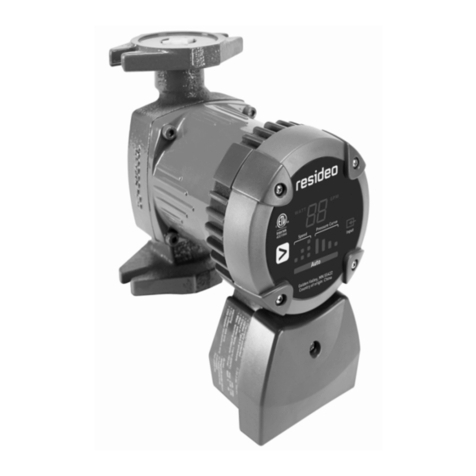
resideo
resideo AquaPUMP PCVF-ECM2020/U installation instructions

Wilo
Wilo Wilo-HiMulti 3 H Series Installation and operating instructions
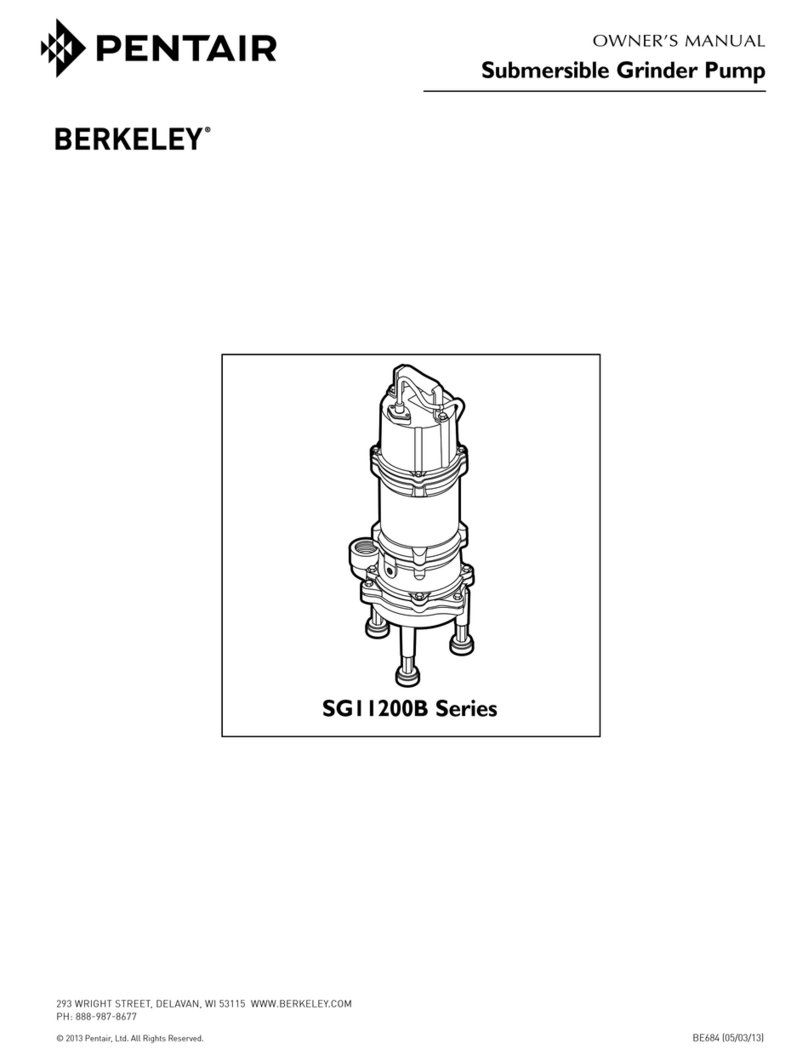
Pentair
Pentair Berkeley SG11200B Series owner's manual
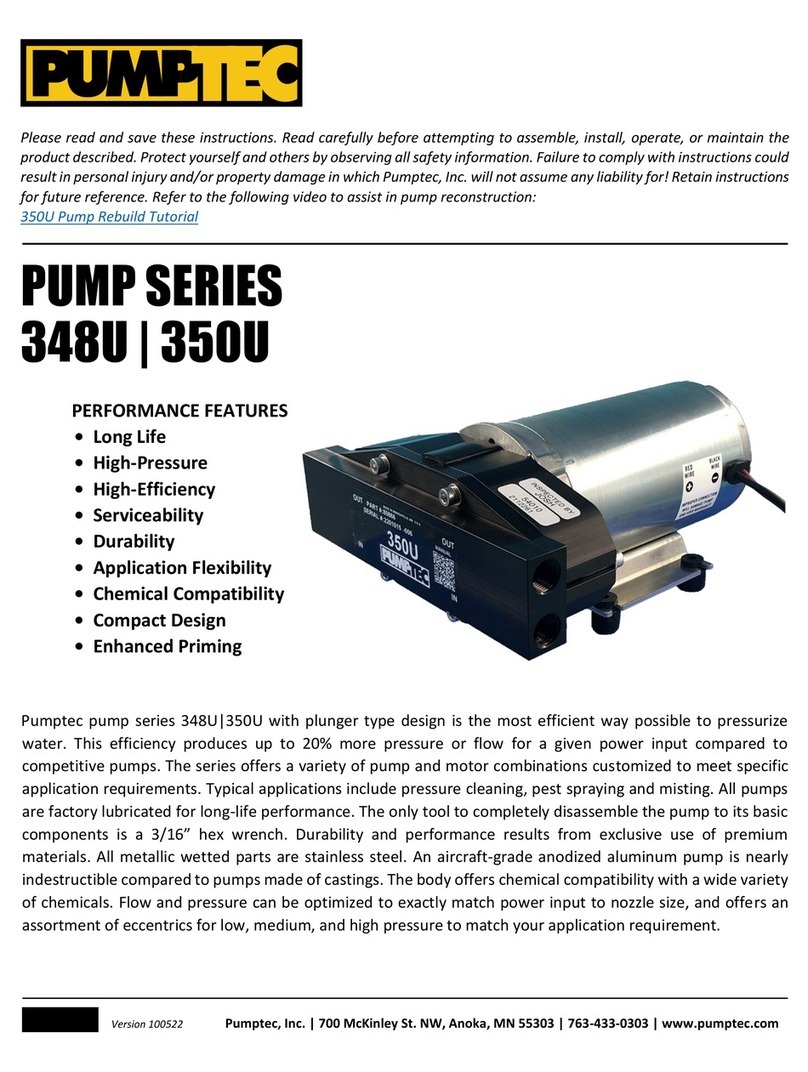
Pumptec
Pumptec 348U Series manual


